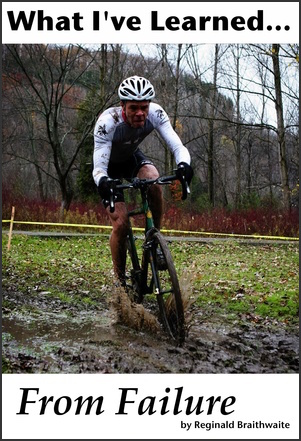mr. r. s. braythwayt,
esquire

What I've Learned From Failure


What I've Learned From Failure


Two weeks ago, I found myself travelling 6,348 kilometres from my home in Toronto to Stockholm to attend Nordic Ruby.1
Nordic Ruby was held at the Yasuragi Hasseludden, a Japanese (or Japanese-themed) spa in the Swedish archipelago. Upon checking in, I was issued some slippers and a blue cotton robe. Walking to my room, I saw many people wearing the exact same robes, some from the conference and others visiting Yasuragi for pleasure. I decided to wear the robe to the conference, and I was not alone.
The business of the robes left a very deep impression on me. Clothing, fashion, and conformity are very deep and powerful parts of our social behaviour. It’s very much a part of what makes us human!
Dressing identically, as if in a uniform, has strong influence on how we approach and perceive each other. When meeting new people, as at a conference like Nordic Ruby, it breaks barriers down, making it easier to strike up a new conversation or join one in progress.
Of course, if you are forced to wear a dark suit and white shirt for years while working alongside the same people day after day, it takes on an entirely different tone. But for a conference, it worked, and worked well.
Now I don’t think the robes are the only reason for this. Hosts CJ and Lilly from Elabs carefully arranged every aspect of the conference to break down barriers between people and encourage thoughtful, constructive conversation.
The talks were deliberately non-technical. This makes sense for a number of objective reasons, one of which is that other tools such as the web do a far better job of teaching skills than a lecture given from a stage with slides. A deeper reason is that technical talks often divide people, creating binary “like/dislike” or “relevant/irrelevant” schisms.
And the deepest reason of all becomes apparent when we ask ourselves what purpose a conference serves. Education? Networking? A few days away from home? For me, conferences are at their best when they address things that are Important but not Urgent, those things we keep putting off because something is on fire.
If you had one extra day to do anything you wanted to do in 2012 but hadn’t the time to start, what would you do with those 24 hours? Read a book? Go for lunch with a particularly insightful colleague? Try a new design approach? Scribble out a design for a new tool?
A great conference plugs directly into the things that our day-to-day career demands starve of attention. Entirely new ideas. The emperor of our existing things having no clothes. Sharing experiences with people.
When you’re engaged with ideas much deeper than “How can I put this fire out,” a lot of other things simply disappear.
As an example of this effect, it was only when I sat down to write this that I realized I don’t recall whether there were other “people of colour” at the conference. Or other Canadians. Or how many people were about my age. Or a bunch of other things that one notices when one is trying to “fit in” and feel welcomed.
At Nordic Ruby, I felt like I belonged right from the start, so I never found myself wondering if I belonged. That’s amazing, and all-too-rare in the technology community.
Was it the robes? Or the tranquil setting? Or was it the deeply provocative ideas from people like Katrina Owen and Chad Fowler? Or was it the generous half-hour breaks between talks that encouraged conversation between attendees rather than an asymmetrical Q&A with the speakers?
I think it was a number of things working together in harmony. And therein lies, for me, a deep lesson about people. The way in which we design conferences, companies, clubs, nations, neighbourhoods, families, everything… It matters. Designing, curating, leading, whatever you call it, making intentional choices about how we interact is important.
It’s not as simple as a mission statement with the right buzzwords, or following a flowchart for improving diversity, or getting really good people involved, or sparing no expense to provide a very high quality experience.
All of those things are good, and may be necessary, but deeper than that is importance of making sure everything is working together to make an experience something that transforms people.
Nordic Ruby was a significant moment in my year. I cannot say if it was the same for everyone, but I can say that several of the attendees talked about presentations that brought them to tears, or provoked them to ask if they were listening to the band playing on the Titanic.
Long after the amazing technical discussions are forgotten, I will remember “How to Talk to Little Girls.” Long after the incredibly smart insights are forgotten, I will remember sharing a beer with someone who had taken the Trans-Siberian Express to come to Nordic Ruby, and sharing whiskey with a “person of leisure” on their way to Berlin.
In the end, software development is a people activity, and Nordic Ruby stripped away all of the obstacles to connecting with each other as one person to another, regardless of gender, age, colour, or preferred editor.
Thumbs up from me, and I hope to see you there in 2014.
Transport du courrier, transport de la voix humaine, le transport des images vacillantes - dans ce siècle, comme dans d’autres, nos plus grandes réalisations ont toujours le seul but d’amener mais ensemble.–Antoine de Saint-Exupéry, Terre des Hommes
Amusingly, I flew straight over Stockholm to Helsinki, and doubled back on a connecting flight. In a sense, I actually flew 6,619 km to Helsinki and another 397 back, for a total of over 7,000 km each way! ↩